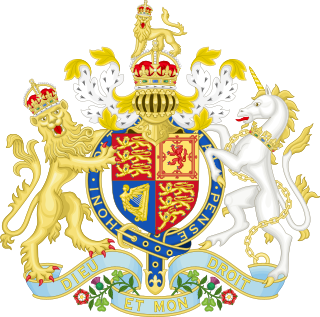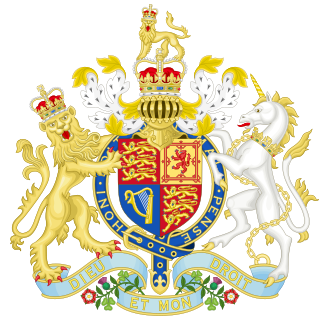
The Controlled Substances Act (CSA) is the statute establishing federal U.S. drug policy under which the manufacture, importation, possession, use, and distribution of certain substances is regulated. It was passed by the 91st United States Congress as Title II of the Comprehensive Drug Abuse Prevention and Control Act of 1970 and signed into law by President Richard Nixon. The Act also served as the national implementing legislation for the Single Convention on Narcotic Drugs.

The term narcotic originally referred medically to any psychoactive compound with numbing or paralyzing properties. In the United States, it has since become associated with opiates and opioids, commonly morphine and heroin, as well as derivatives of many of the compounds found within raw opium latex. The primary three are morphine, codeine, and thebaine.

The Misuse of Drugs Act 1971 is an act of the Parliament of the United Kingdom. It represents action in line with treaty commitments under the Single Convention on Narcotic Drugs, the Convention on Psychotropic Substances, and the United Nations Convention Against Illicit Traffic in Narcotic Drugs and Psychotropic Substances.

Pentazocine, sold under the brand name Talwin among others, is a painkiller used to treat moderate to severe pain. It is believed to work by activating (agonizing) κ-opioid receptors (KOR) and μ-opioid receptors (MOR). As such it is called an opioid as it delivers its effects on pain by interacting with the opioid receptors. It shares many of the side effects of other opioids like constipation, nausea, itching, drowsiness and respiratory depression, but unlike most other opioids it fairly frequently causes hallucinations, nightmares and delusions. It is also, unlike most other opioids, subject to a ceiling effect, which is when at a certain dose no more pain relief is obtained by increasing the dose any further.

The Single Convention on Narcotic Drugs, 1961 is a United Nations treaty that controls activities of specific narcotic drugs and lays down a system of regulations for their medical and scientific uses; it also establishes the International Narcotics Control Board.
A controlled substance is generally a drug or chemical whose manufacture, possession and use is regulated by a government, such as illicitly used drugs or prescription medications that are designated by law. Some treaties, notably the Single Convention on Narcotic Drugs, the Convention on Psychotropic Substances, and the United Nations Convention Against Illicit Traffic in Narcotic Drugs and Psychotropic Substances, provide internationally agreed-upon "schedules" of controlled substances, which have been incorporated into national laws; however, national laws usually significantly expand on these international conventions.
Citation of United Kingdom legislation includes the systems used for legislation passed by devolved parliaments and assemblies, for secondary legislation, and for prerogative instruments. It is relatively complex both due to the different sources of legislation in the United Kingdom, and because of the different histories of the constituent countries of the United Kingdom.

The Public Health Act 1875 is an Act of the Parliament of the United Kingdom, one of the Public Health Acts, and a significant step in the advancement of public health in England.

The drug policy in the United States is the activity of the federal government relating to the regulation of drugs. Starting in the early 1900s, the United States government began enforcing drug policies. These policies criminalized drugs such as opium, morphine, heroin, and cocaine outside of medical use. The drug policies put into place are enforced by the Food and Drug Administration and the Drug Enforcement Administration. Classification of Drugs are defined and enforced using the Controlled Substance Act, which lists different drugs into their respective substances based on its potential of abuse and potential for medical use. Four different categories of drugs are Alcohol, Cannabis, Opioids, and Stimulants.

Oripavine is an opioid and the major metabolite of thebaine. It is the parent compound from which a series of semi-synthetic opioids are derived, which includes the compounds etorphine and buprenorphine. Although its analgesic potency is comparable to morphine, it is not used clinically due to its severe toxicity and low therapeutic index. Being a precursor to a series of extremely strong opioids, oripavine is a controlled substance in some jurisdictions.

Desoxymethyltestosterone (DMT), known by the nicknames Madol and Pheraplex, is a synthetic and orally active anabolic–androgenic steroid (AAS) and a 17α-methylated derivative of dihydrotestosterone (DHT) which was never marketed for medical use. It was one of the first designer steroids to be marketed as a performance-enhancing drug to athletes and bodybuilders.

The Convention on Psychotropic Substances of 1971 is a United Nations treaty designed to control psychoactive drugs such as amphetamine-type stimulants, barbiturates, benzodiazepines, and psychedelics signed in Vienna, Austria on 21 February 1971. The Single Convention on Narcotic Drugs of 1961 did not ban the many newly discovered psychotropics, since its scope was limited to drugs with cannabis, coca and opium-like effects.

Dexanabinol is a synthetic cannabinoid derivative in development by e-Therapeutics plc. It is the "unnatural" enantiomer of the potent cannabinoid agonist HU-210. Unlike other cannabinoid derivatives, HU-211 does not act as a cannabinoid receptor agonist, but instead as an NMDA antagonist. It therefore does not produce cannabis-like effects, but is anticonvulsant and neuroprotective, and is widely used in scientific research as well as currently being studied for applications such as treating head injury, stroke, or cancer. It was shown to be safe in clinical trials and is currently undergoing Phase I trials for the treatment of brain cancer and advanced solid tumors.

The Tenth Amendment of the Constitution of India, officially known as The Constitution Act, 1961, incorporated Dadra and Nagar Haveli as the seventh Union territory of India, by amending the First Schedule to the Constitution. It also amended clause (1) of article 240 of the Constitution to include therein the Union territory of Dadra and Nagar Haveli in order to enable the President to "make regulations for the peace, progress and good government of the territory". The 10th Amendment retroactively came into effect on 11 August 1961.

HU-243 (AM-4056) is a synthetic cannabinoid drug that is a single enantiomer of the hydrogenated derivative of the commonly used reference agonist HU-210. It is a methylene homologue of canbisol. It is a potent agonist at both the CB1 and CB2 receptors, with a binding affinity of 0.041 nM at the CB1 receptor, making it marginally more potent than HU-210, which had an affinity of 0.061 nM in the same assay.
Drugs considered addictive or dangerous in the United Kingdom are called "controlled substances" and regulated by law. Until 1964 the medical treatment of dependent drug users was separated from the punishment of unregulated use and supply. Under this policy drug use remained low; there was relatively little recreational use and few dependent users, who were prescribed drugs by their doctors as part of their treatment. From 1964 drug use was decreasingly criminalised, with the framework still in place as of 2014 largely determined by the Misuse of Drugs Act.

The Public Health Act 1936 is an act of the Parliament of the United Kingdom. As of 1973, it was the principal Act on the subject of public health. Its provisions repeal and re-enact most earlier statutes on that subject. It is one of the Public Health Acts 1936 and 1937.

The Public Health Act 1961 is an Act of the Parliament of the United Kingdom. Together with certain other Acts, it amends and amplifies the Public Health Act 1936.

Elections to Kesteven County Council were held on Saturday, 15 April 1961. Kesteven was one of three divisions of the historic county of Lincolnshire in England; it consisted of the ancient wapentakes of Aswardhurn, Aveland, Beltisloe, Boothby Graffoe, Flaxwell, Langoe, Loveden, Ness, and Winnibriggs and Threo. The Local Government Act 1888 established Kesteven as an administrative county, governed by a Council; elections were held every three years from 1889, until it was abolished by the Local Government Act 1972, which established Lincolnshire County Council in its place.

The Department for Business, Energy, and Industrial Strategy (BEIS) was a ministerial department of the United Kingdom Government, from July 2016 to February 2023.

















